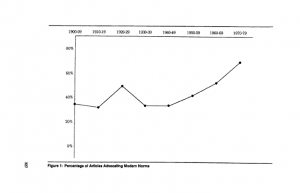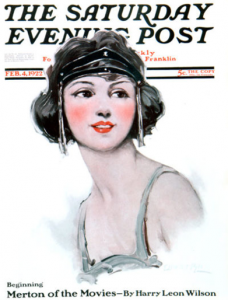Family Limitation, Margaret Sanger, 1914

During the beginning of the 1900s, the shift of the roles of women began to take place in American society. Traditionally, the duty of women was to serve men domestically as well as take care of the children in the household. This role had faced a new alternative once women had been given the power of birth control due to the reemergence of the eugenics movement. People such as Margaret Sanger introduced the idea of limiting families and birth control to women, which in turn gave women an enhanced sense of empowerment. In Sanger’s work, she states that women should have control over their own bodies and be able to make their own decisions with things like having a child. To have views like this during a time as conservative as the early 1900s was unheard of, and for that reason Sanger was scrutinized by conservatives and was even jailed for 9 after opening a birth control clinic in Brooklyn. While the idea of birth control is heavily debated even in in present day America, Margaret Sanger was one of the first trailblazers for this movement which give women the right to their bodies.
Changing Emotion Norms: Love and Anger in U.S. Women’s Magazines
Since 1900, Francesca M. Cancian and Steven L. Gordon, 1988

The model above was constructed by Francesca M. Cancian and Steven L. Gordon, professors at the University of California, Ivine and California State University, Los Angeles. The two created the chart to illustrate the shifts of gender roles and expectations from 1900 onward by quantifying the amount of progressive publications of women throughout media. The graph clearly depicts the change that was occurring in society in regard to the portrayal of women. The spike that was most apparent on the graph was from 1910 to 1920. By no means was this spike a coincidence due to the fact that occurrences such as the introduction of birth control as well as the flapper movement began to take off during that decade. Media and advertisers viewed these trends as an opportunity to capitalize on and use to grab the attention of consumers. The graph makes it clear how the dynamic of the Women’s Rights Movement was a popular topic of the time and gives quantitative evidence to further emphasize how the evolving roles of women was just a prelude to the presence and depiction of women in modern society.
Cover of The Saturday Evening Post, Ellen Pyle, 1922

As shown graphically prior, there was a major culture shift in pop culture in terms of the portrayal of women. Here is a perfect example of that on the cover of one of America’s most popular periodicals of the time, The Saturday Evening Post, which boasted legendary artists such as Norman Rockwell creating cover art for their widely-read magazine. As mentioned before along with the model, the 1920s featured the flapper era, where women began to dress more risqué, party more, and lead independent, single lifestyles. On the cover, the artwork gives a perfect example of what a flapper would look like. The glorification of said style helps demonstrate the popularity as well as the shift culturally of the role and representation women had gained during the early 1900s.
